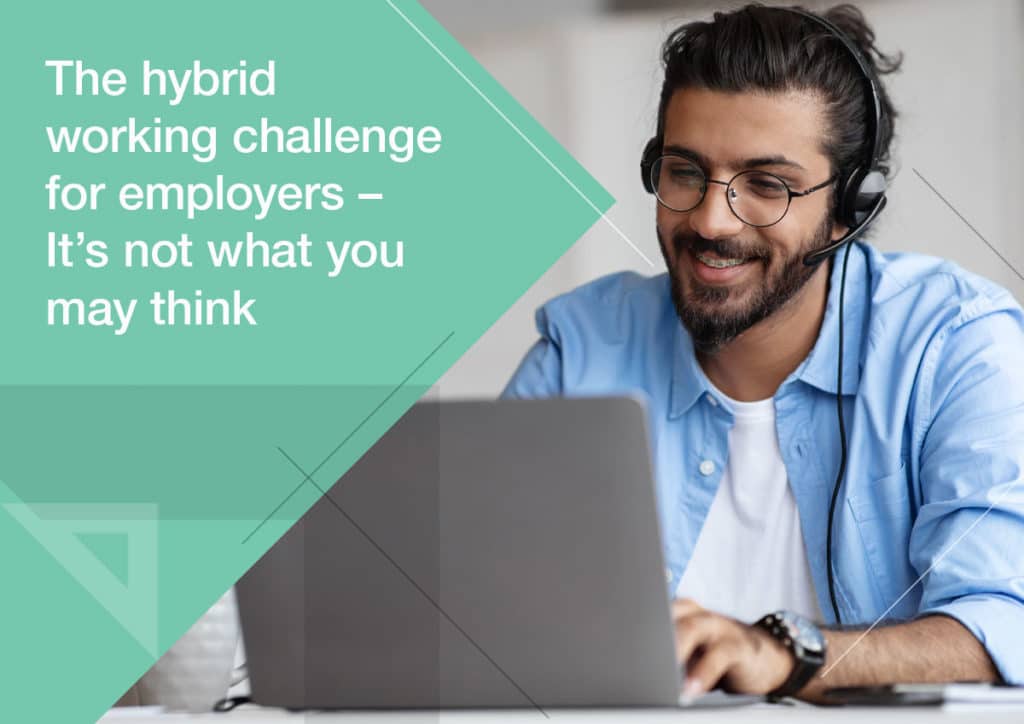The Hybrid Working Challenge for Employers – It’s Not What You May Think
-
August 16, 2023
- Posted by: Pete Summers

The emergence of the hybrid work model at unprecedented speed meant entire workforces becoming distributed almost overnight. But giving people access to technology is only the first step in becoming a digitally agile, hybrid organization. The technology itself is the easy part. Now, organizations face a new challenge: How to measure and understand the positives and negatives of hybrid working, and its ultimate impact on business success.
Few organizations have truly taken stock of how employees fare when working flexibly, even though the model is here to stay. Companies can get much better results from hybrid working by empowering employees to be as effective as they can be. IT’s emphasis should be on making sure technology helps rather than hinders hybrid workers, but right now that’s not always easy. Even if they have set the right goals, organizations may lack the insight into how users interact with their hardware and software. Without this insight, leaders can’t spot points of friction in the hybrid user experience. As a result, they miss opportunities to streamline processes and improve employee success.
Additionally, senior leaders and HR teams may not notice signs that poorly architected infrastructure and applications, and a lack of support, are hurting employee well-being. Inefficient working practices put pressure on staff who are trying to balance the demands of work while moving between home and the office. Employees may, for example, be putting in longer working hours to compensate for inadequate systems or feel isolated from colleagues if they lack the right collaborative solutions. These factors can have a significant impact on teams’ health, inevitably leading to an outflow of key talent if problems go unaddressed, with a knock-on effect for the business’s bottom line.
To really understand how the hybrid working challenge impacts an organization, IT and HR teams should focus on answering two sets of questions about hybrid working:
- EMPLOYEE EXPERIENCE
- What is the employee experience like day-to-day?
- Do they have the technology needed to communicate with colleagues easily when they are not in the office?
- Are they using this technology in a way that satisfies their social needs, or are they feeling isolated?
- Do they have the systems (hardware and software) they need to be effective, and are those systems performing as they should?
- Can HR easily identify work patterns and potential issues that impact on employee well-being?
- MEASURABLE BUSINESS IMPACT
- Are there any additional operational risks – for example, in terms of IT and information security – and if so, how can they be managed?
- Can you easily measure the cost impact of hybrid working on the business?
- Do you know the KPIs and metrics that you should measure to assess the effectiveness of hybrid working?
- Are any areas suffering from the fact that employees can’t always physically see each other at the water cooler, in meeting rooms, and at their desks?
- If so, how can these gaps be overcome?
Without the answers to these questions, organizations can’t know whether or not the sizable investments many have made in digital workplace initiatives are paying off. Companies are spending heavily on providing hybrid workers with access to team collaboration, file sharing, web conferencing, telephony, virtual desktops, and remote access, without assessing how the overall employee experience is changing and how it can be optimized.
Accurately evaluating what the day-to-day digital journey looks like “on the ground” requires a sophisticated approach to triangulate the experience. This includes gathering data from physical technology assets like a laptop or tablet, to the software on that device, to being able to understand an individual’s working pattern and how they interact with colleagues, technology, and systems.